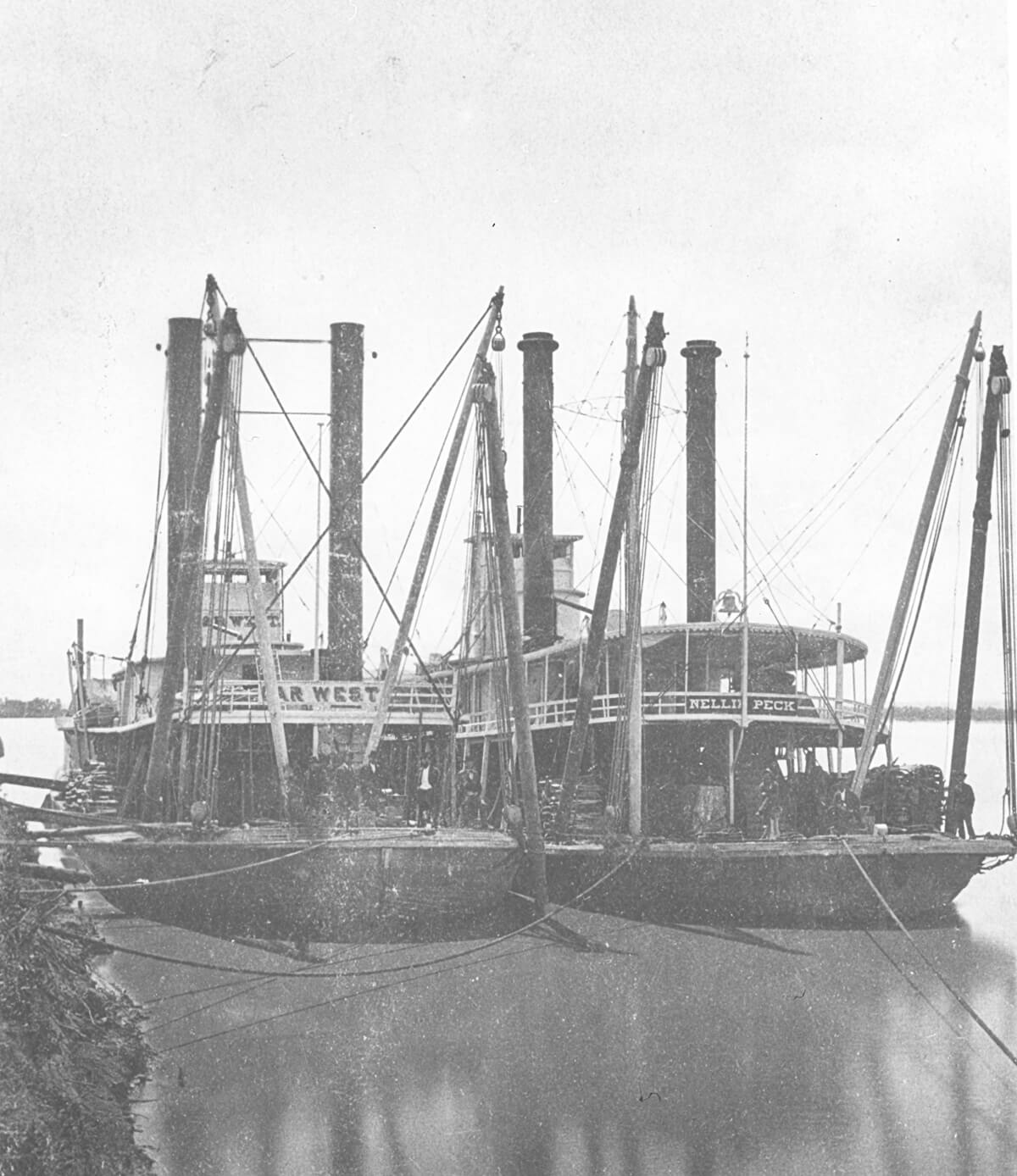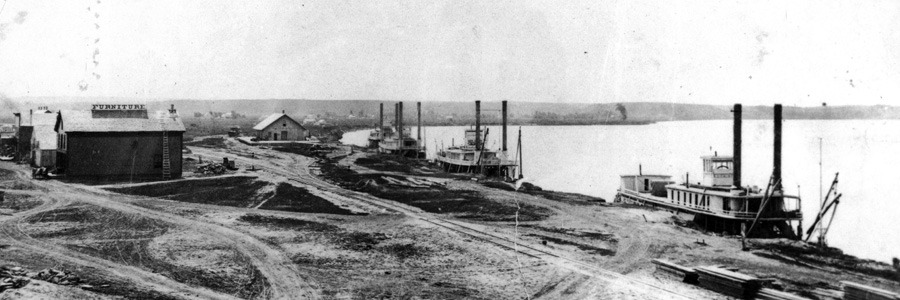Steamboats Take on American Northwest
After Lewis and Clark explored the Louisiana Purchase and opened the new American Northwest to commercial interests and settlement, steamboats began traveling the Missouri River. Despite its short navigation season, and with many boats grounding on sandbars and sinking on snags, the enterprise persisted and gained political power. Boat design changed to comply with Missouri River characteristics. Missouri River steamboats could move in shallow water and were often smaller and handled more nimbly so pilots could navigate the Missouri's winding, shifting channel.

Steamboat Traffic Pushes Improvements
The Missouri’s shipping industry has always been meager relative to the political influence it wields. This was Sioux City’s small, shabby “port” in the mid-1800s. Steamboat companies relentlessly lobbied for many changes to the natural Missouri River so they could profit from river trade. Many of these early changes –bank stabilization and snag-pulling, for example- were paid for by taxpayers. River shipping companies initially rejected proposals to build dams in the river’s upper basin, fearing the impounded water would be kept from reaching the lower section of the river. Over time they came to understand that dams built in the upper basin could help control flows allowing commercial shippers to use the river for a longer navigation season in its lower and more populous section – from Sioux City, Iowa to St. Louis.

A potent, political force continuing to compel efforts to control the Missouri River was the rapidly developing commercial navigation industry. By 1844 many steamboats were moving goods in spring and early summer from ports and docks along the river between St. Louis to central Montana. Though ports were primitive, their importance relative to settling the northern plains and supplying miners and service industries in early gold fields was irrefutable. Channel conditions, however, were unpredictable, and commercial steamboat companies wanted a reliably deep and debris-free shipping lane. In 1844, another factor provided more impetus to control the river system.

1844 Flood Gives More Cause for Improvements
Scientists say the 1844 Missouri River flood was the biggest in the river’s history. Estimates are that at the height of the flood the Missouri discharged almost 4.5 million gallons of water per second into the Mississippi River. Damage to riverside communities and farms, however, was less severe than future floods because cities and farming had not yet significantly developed along the Missouri by 1844. Flooding destroyed docks and hampered upriver steamboat movement. Shippers and flood control interests lobbied the government to build dikes, levees and bank stabilization projects along the lower reach of the river. It’s also worth noting that within a decade -by the 1850s- the fuel requirements for steamboats (they needed to burn lots of wood) had practically decimated native forests along the river in many areas, and Sioux Indians on the northern plains were regularly raiding and sometimes killing woodcutting crews who cut trees along the river and sold wood to steamboat companies.
